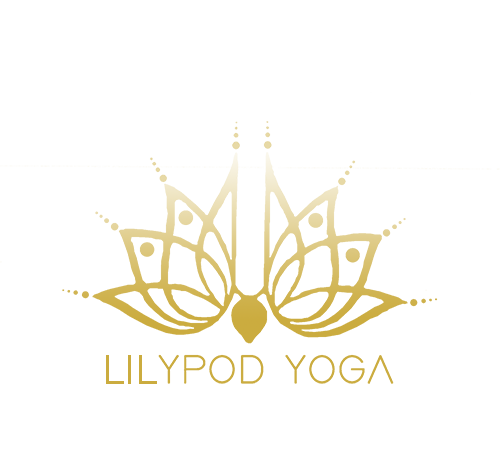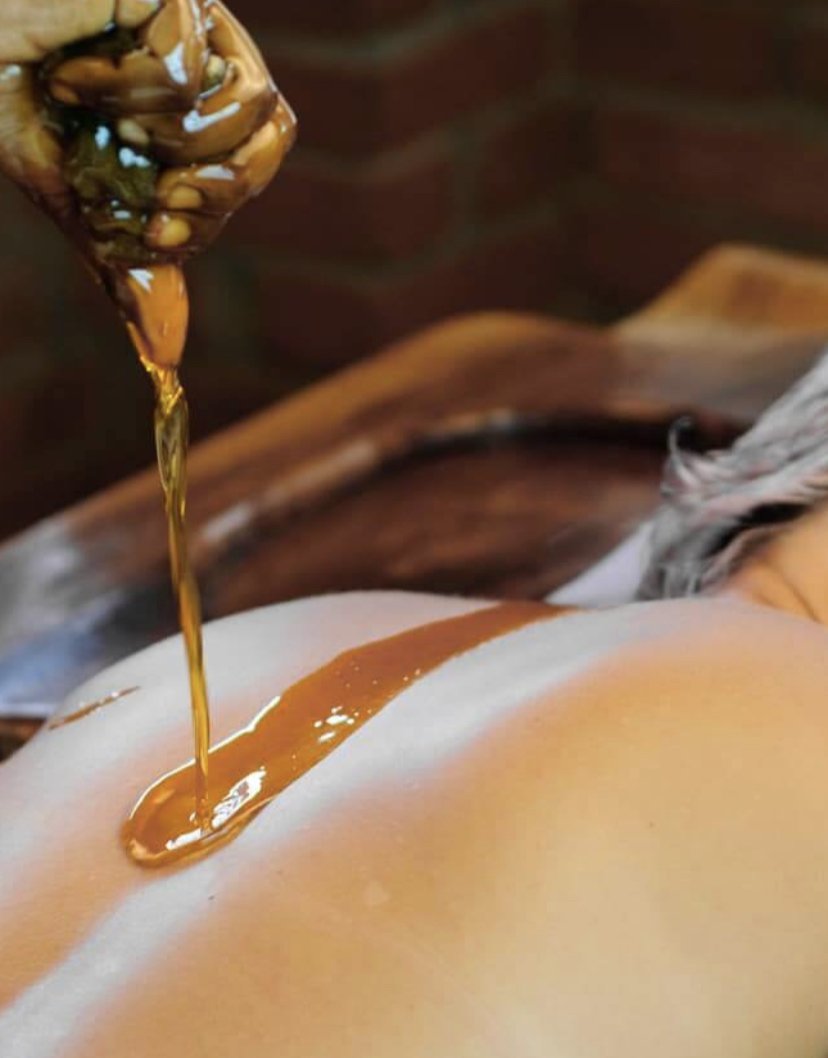PANCHAKARMA / deep intestinal CLEANSE
private or small groups
“Yoga is the settling of the mind into silence. When the mind has settled, we are established in our essential nature, which is unbounded consciousness.” - Patañjali
What Is Panchakarma?
Panchakarma eliminates accumulated impurities from the mind-body physiology; it is essentially a detoxification program. Pancha in Sanskrit means “five,” and karma means “action” and refers to five different purifying and rejuvenating procedures in Ayurveda. When it was initially designed thousands of years ago, there weren’t as many causes for unhealthy accumulations in the body, but it was still necessary to create this sophisticated panchakarma detox program. Today, as improper diet, stress, and environmental hazards abound, panchakarma can be of great help.
A panchakarma program takes place over the course of several days, allowing plenty of time and space to rest and process the experience. Each step in the program is purposeful and is meant to ultimately restore your body’s innate healing ability. Your body knows how to cleanse itself quite efficiently and is well-equipped to remove waste through various channels such as:
Sweat glands
Blood vessels
Urinary tract
Intestines
Since your body has its own detoxification system, what’s the purpose of panchakarma?
Think of a car that is well-maintained and how long it can be kept running. Give it good oil and the attention it needs, and it will reward you with many good years. Ignore your car and its parts start to wear out and overall functioning is less than optimal. While you are more complex than a car, the same concept applies. Sometimes your body and mind need a little help. You need all your parts to be running smoothly to feel healthy and energized. In order to do so, a little conscious effort is needed.
Panchakarma helps to gently clear the channels of removal in the body so that everything runs smoothly and efficiently, like a well-oiled machine. In the process, your mental and emotional bodies go through their own cleansing process as well. The mind and body are intricately connected according to Ayurveda. What you do to one affects the other. For example, when you feel stress you will always feel it somewhere in your body. Or, when you have a good workout, your mind feels light and clear.
Herbal oil massages
Steam baths or Hot baths
Cleansing enemas
Nasal administration
Gentle laxatives (senna)
Specialized diet
Signs You Might Benefit from Panchakarma
If you notice you have any of the following symptoms, you might benefit from a panchakarma program:
A thick layer of coating on the tongue
Tired throughout the day, especially after meals
Body aches and pains
Uncontrollable cravings
Foggy mind
Bad breath, odor, and flatulence
Constipation or diarrhea
The package Includes:
Complete step-by-step guide, schedule, and explanations of protocols to be followed.
Morning meditation, Yoga, breathwork, and all daily practices.
Specialized diet according to Ayurveda, all medicinal herbs and tonics,
Ayurvedic treatments: steam baths, cleansing enemas, nasal /nose oil administration, gentle laxatives (senna).
Personalized support and follow-up call I month post-program.
The process:
Day 1 to 3: Snehana: internal oleation with ghee (consumed early in the morning) followed by external oleation a few hours later by a warm oil full body massage AKA Abhyanga.
Day 4 to 7/8 Swedana: sweat treatments using a hot shower, hot bath, or steam bath post external oleation / Abhyanga. Application of Nasya: medicated nose oils
Last 3 / 5 days: Basti: herbalized enemas
Day 5 to 7/8: Virechana: light purgation using triphala, followed by a steam bath using dashamula a classical cleansing herb in Ayurveda
These therapeutic processes are still based on the original five actions and the effects are powerful and long-lasting. Using your body’s channels of detoxification the entire program is designed to not only heal your body but facilitate a deep-rooted release of stress that has sometimes been stored for years. For many, panchakarma ends up being an unexpected and powerful journey into the healing process.
Example of a typical day:
Wake up at sunrise and practice gentle yoga, pranayama and meditation.
Consumption of ghee no later 6 AM
Drink a cup of spiced tea with cumin, ginger, cardamom, fennel seeds, and other spices and herbs for your dosha.
Enjoy a light breakfast. 7:30 AM
Begin your first treatment of the day, such as an oil massage 10 AM
Spend time in the dry or wet steam room to release toxins. 11:30/Noon.
Eat a detoxifying lunch of kitchari, lentils, and rice in healing spices. Noon
Walk around in nature or sit and meditate. Try to detach from technology! (Post lunch)
Undergo another treatment, 2 PM
Consume a light dinner or cooked vegetables, rice or broth. 7 PM
Read, Yin /restorative asanas 15 min meditate, or journal
Bedtime 10 PM
PREPARING YOUR BODY
We recommend you to gradually start to slow down the week before you choose to do the cleanse as much as possible.
Your diet should favor warm-cooked grains, legumes and vegetables.
Avoid cold foods/drinks (especially ice)
Avoid raw fruits and vegetables, garlic & onion
Avoid cheese or other heavy dairy products
Avoid alcohol
Avoid caffeine
We recommend you to start to practice a little yoga, pranayama, and meditation if you are not already doing so as part of your daily rhythm.
AYURVEDIC DIAGNOSIS
At the start of the Ayurvedic diagnosis the doctor will ascertain the patient's dosha constitution. This forms the foundation for working out a therapy plan and for choosing the correct herbs and medication.
Ayurvedic physicians have various tools at their disposal for diagnosing the prevailing constitution. A first indication is given simply by the patient's external appearance as well as by the initial medical consultation. By using the Ayurvedic pulse diagnosis (Nadi Vigyan), the doctor can obtain additional information about the dosha constellation.
The condition of the patient's organs and any possible disorders can also be diagnosed. Ayurvedic tongue diagnosis helps the doctor detect any imbalance in the doshas as well as potential digestive problems. Only a detailed diagnosis by an experienced Ayurvedic doctor can identify the dosha constitution and enable correct treatment.
Contraindications for Panchakarma treatment
Panchakarma treatment can be pretty demanding both physically and mentally. Consequently, it is not something to be entered into at any time. In fact, for some people it is entirely inappropriate. For instance, for children due to the fact that they are still growing. In addition, anyone who feels physically weak or who is dealing with the after-effects of an illness or operation should postpone this kind of treatment – or even reconsider it completely. Sometimes it is possible to gradually prepare a weakened organism for Panchakarma treatment by means of a series of other Ayurvedic therapies.
Panchakarma needs time
It is important to note that a complete Panchakarma therapy requires a lot of time and cannot be implemented alongside normal, everyday life. At best, it may be possible to incorporate the preparation phase into your everyday routine. For the majority of the treatment with the different purging therapies, you will definitely need to be fully dedicated to the treatment process.
ORIGINS OF PANCHAKARMA
As early as the period when the Vedas first appeared, elements of Panchakarma would have been familiar to the authors of these texts (the Rishis). Even during these early days for Ayurveda, there are references to Vamana (a therapy involving vomiting) and Virechana (purging therapy). Dhanvanthari, Ayurveda's supreme sovereign, is depicted holding a Jalooka (a leech) in his hand. This suggests that some kind of bloodletting procedure was already being used as a cleansing therapy. Nasya (a nasal rinsing therapy) is also mentioned in Vedic literature. Panchakarma as a comprehensive therapeutic system began to take shape at the time of the oldest traditional Ayurvedic compendium, the 'Caraka Samhita'. It is estimated that this text appeared between around 2,000 BC to 700 BC. Panchakarma is based on the central concepts of Ayurveda, which suggest that illness is caused by the build-up of toxins in the body and through imbalances in both mind and body.
small glossary
Ayurvedic oil massage, carried out simultaneously by two therapists. Part of Panchakarma therapy.
Digestive fire, digestive strength.
Metabolic residues.
Ayurvedic constitution type, translates as: "fundamental functional principles". These are categorised as VATA, PITTA, KAPHA.
Clarified butterfat. Ghee is the golden elixir in Ayurvedic treatment. The process to make it is extremely laborious.
Ayurvedic nasal rinsing with therapeutic oils or herbal extracts, part of Panchakarma therapy.
The classic Ayurvedic cleansing treatment. Panchakarma translates as "the five actions". In Ayurveda this refers to the five cleansing procedures. These all ensure that foreign toxins and pathogens are eliminated from the body.
Ayurvedic treatment involving pouring oil over the patient's forehead, part of Panchakarma therapy. "Siro" means head and "Dhara" is an uninterrupted flow of liquid.VASTIAyurvedic intestinal treatment, part of Panchakarma therapy. Medicinal enema using herbal oils or a broth made from medicinal herbs.
BASTI
IAyurvedic intestinal treatment, part of Panchakarma therapy. Medicinal enema using herbal oils or a broth made from medicinal herbs
Any queries regarding our program please contact Liilamaya directly form below 👇
ENERGY EXCHANGE: €2,999 * Based on a 7-day program - CLICK HERE for more details and booking.


